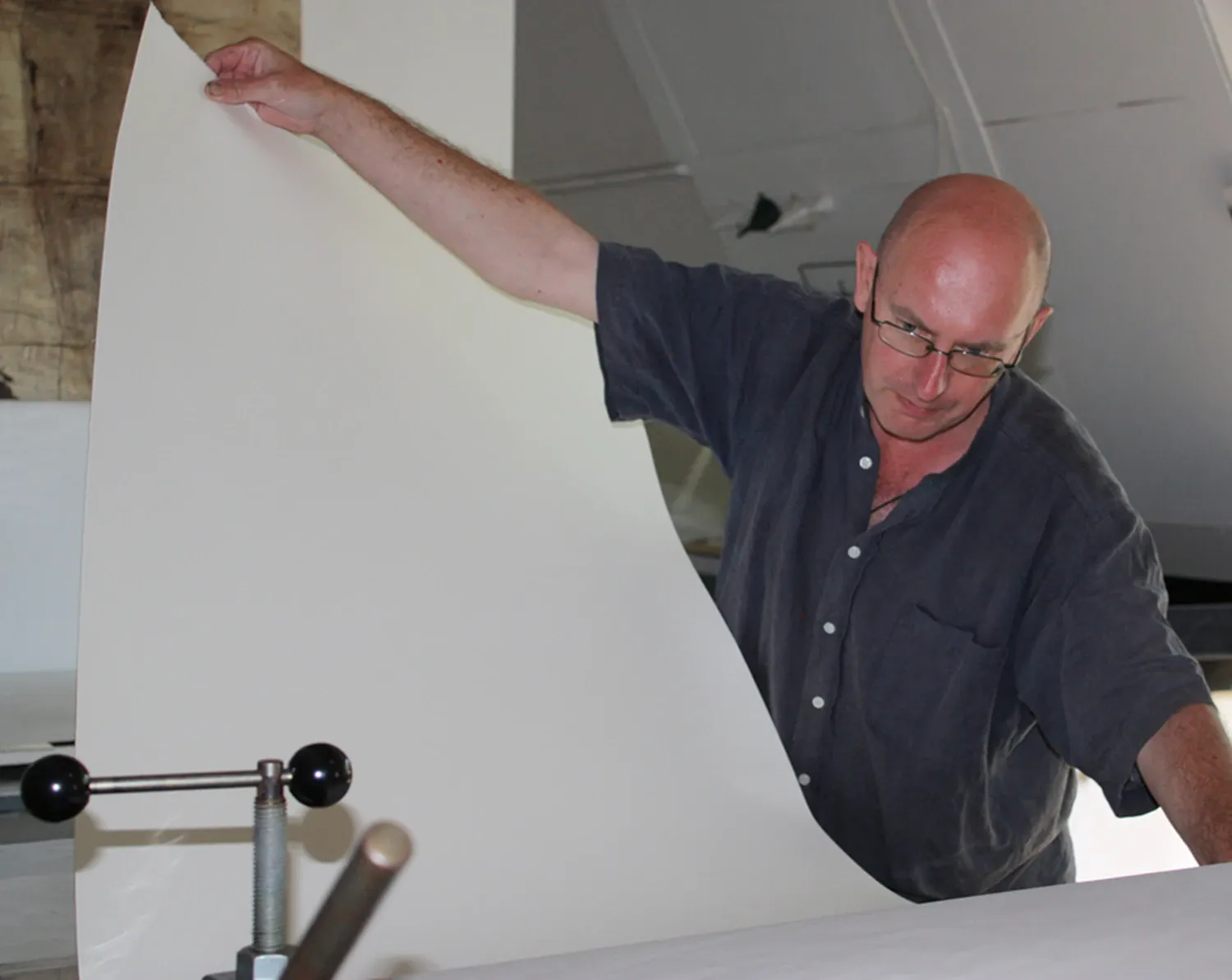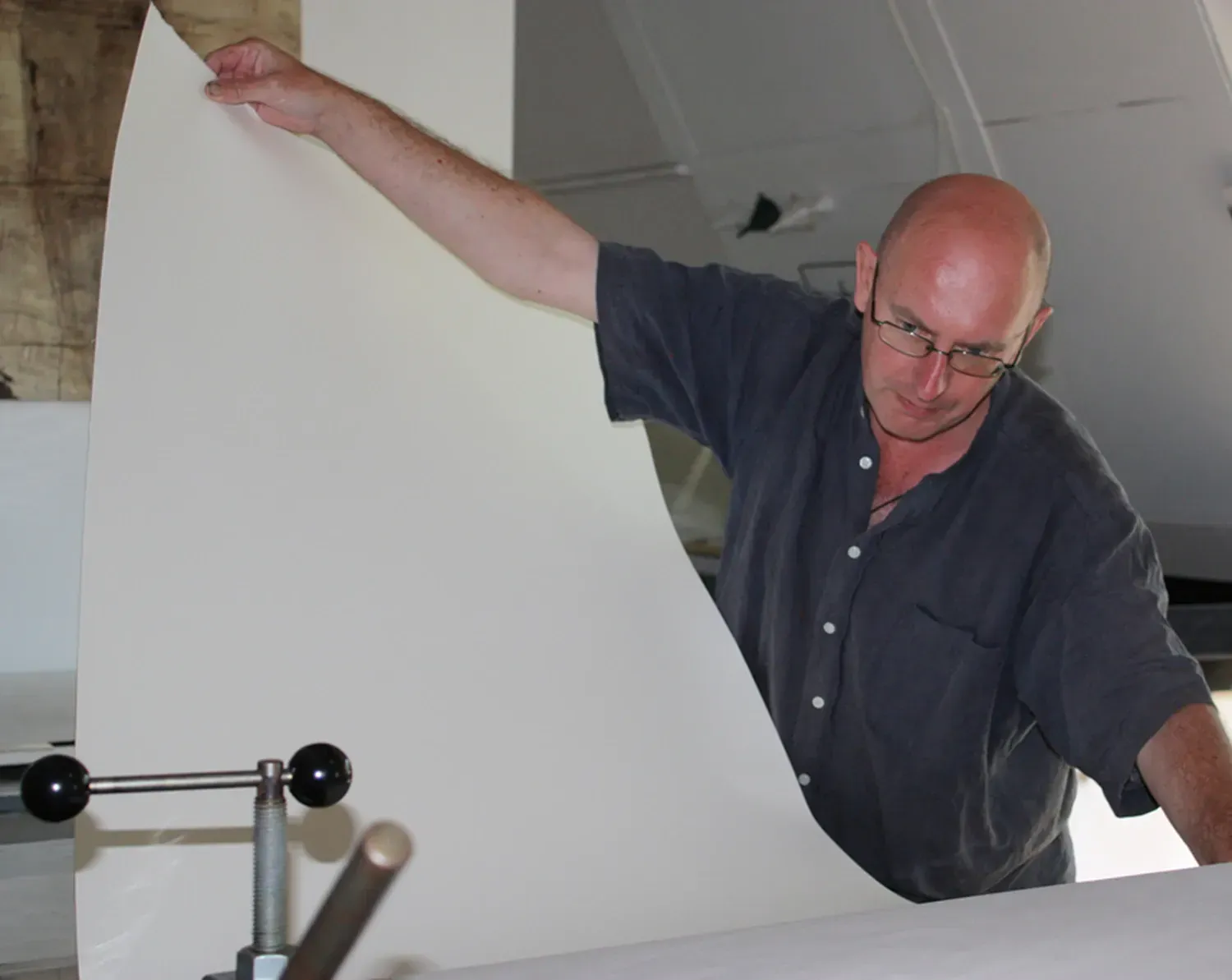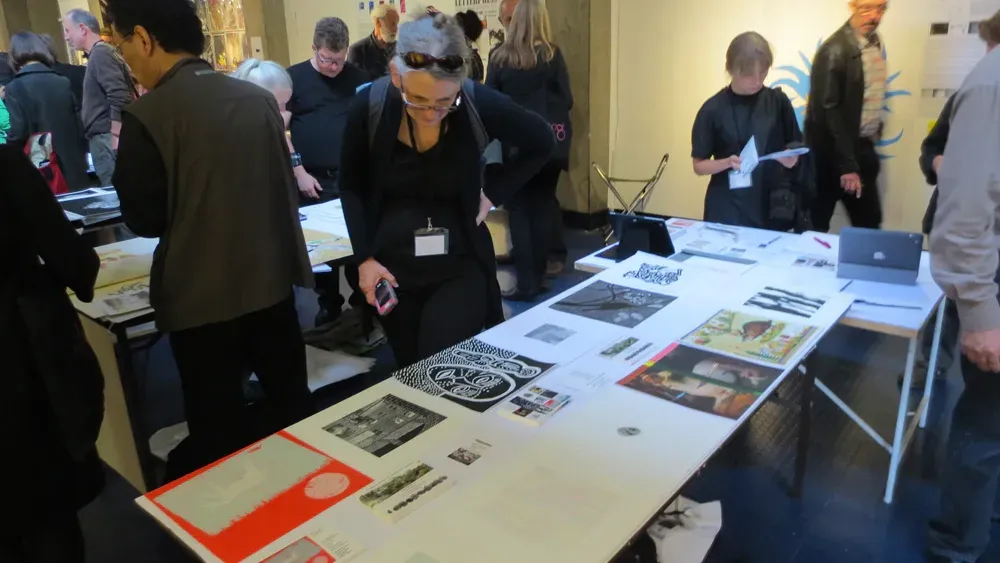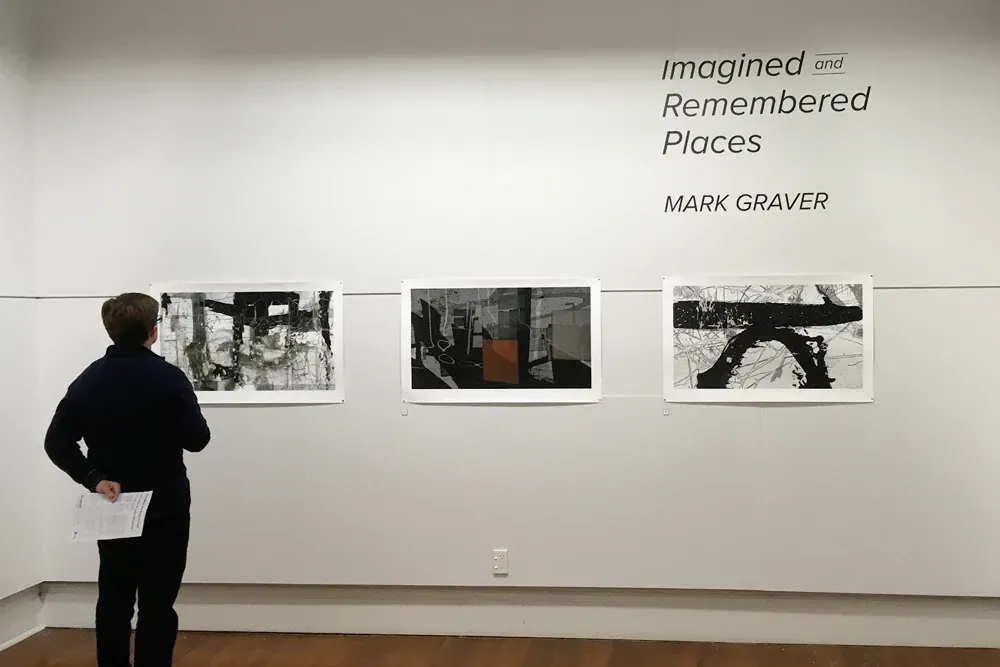If you’re not being rejected, you are not applying enough
Written by
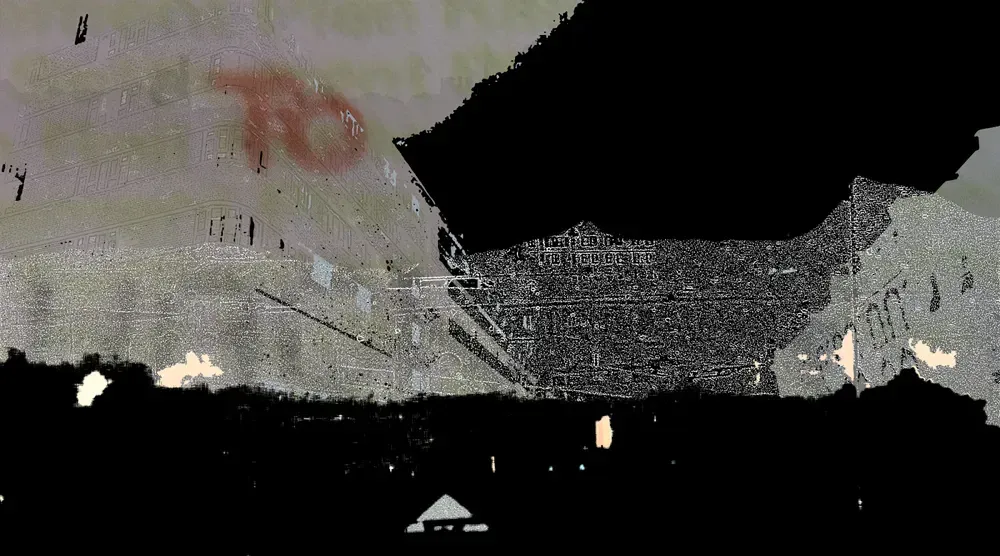
Award-winning printmaker Mark Graver was recently elected to The Royal Society of Painter-Printmakers (RE), arguably the highest form of global peer group recognition for printmakers. Following this accolade, we asked Mark to share some words of wisdom for emerging or mid-career artists. Here are four stunning pieces of advice for any artist whatever their practice, just adapt them to your discipline.
1. Get involved in your local scene
In 2003 I left the UK with my partner Tania Booth and moved to Wharepuke; a property bought by her grandfather in 1938 then divided between his four sons. At first, I felt isolated geographically and socially - connections were in the UK, there were few outlets for original printmaking in NZ.
I joined the PCANZ – Print Council of Aotearoa New Zealand and now I’m currently working with some Council members on an exchange exhibition in the Netherlands which will tour NZ next year.
I’ve regularly approached NZ dealer galleries, sending letters and publications. While they rarely reply unless with polite rejections, it can work. My current show at Anderson Rhodes Gallery in New Plymouth evolved after making contact this way.
2. Get to know your own work better
Think about it. Write about it. Talk about it. In 2005 I began teaching on the arts degree at the local polytechnic. I developed a non-toxic etching course – then unique at tertiary level in NZ - and taught drawing, painting, history and critical theory. Using PBRF - Performance Based Research Funding - I curated international exhibitions, portfolio projects and symposiums and attended conferences in Australia and the UK. Portfolios were collected by the V&A and museums in China, NZ and Australia.
What’s your work about? Why does it matter? Keep revising, researching, evolving and re-writing.
I also recommend reading ‘Writing About Contemporary Art’ by Gilda Williams.
3. Enter everything
There is an established global print community with regular open submission competitions. Some with entry fees, some not. Some with size and technical restrictions, some with juries. I’ve found that work on paper is easier to send abroad. I also target shows publishing catalogues which helps build a library of contemporary practice.
It also helps to have things ready to send if approached – images at different resolutions, CV, bio statements. Build a CV and a website with images and basic info – think of it as a ‘gallery/portfolio’. Do it yourself and keep it up to date. Do the work and make easy for the gallery/competition.
Say ‘Yes’ to opportunities and then work out how you’ll do it. There’s always someone else behind you who’ll take it instead. As Karen Atkin said, “If you’re not being rejected, you’re not applying enough.”

Impact Dundee - photo supplied.
3. Grow your network
Curating allows me to invite artists to shows or projects. This builds networks – like Facebook but with actual friends - adds strength and credibility to proposals and creates future opportunities.
Networks, support, collaboration, and camaraderie are traditional among printmakers. Working this way led to invitations to judge shows in China, Bulgaria and NZ, to run international printmaking workshops and to invited residencies in Ballarat and Hobart.
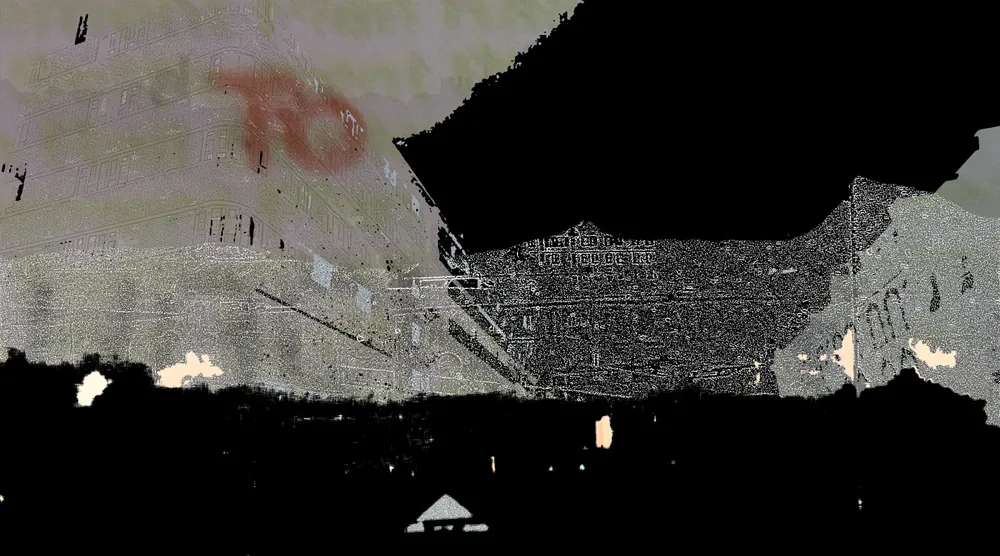
Downs by Mark Graver - photo supplied.
4. Define success
For many artists, success equates to sales. While these are undoubtedly a marker, I have always leaned towards peer recognition and having work collected by public museums as a more solid indicator.
Ultimately though, success is being able to sustain a day to day creative practice. I’ve managed this for around 25 years, the last 16 of which I’ve spent living in Kerikeri.
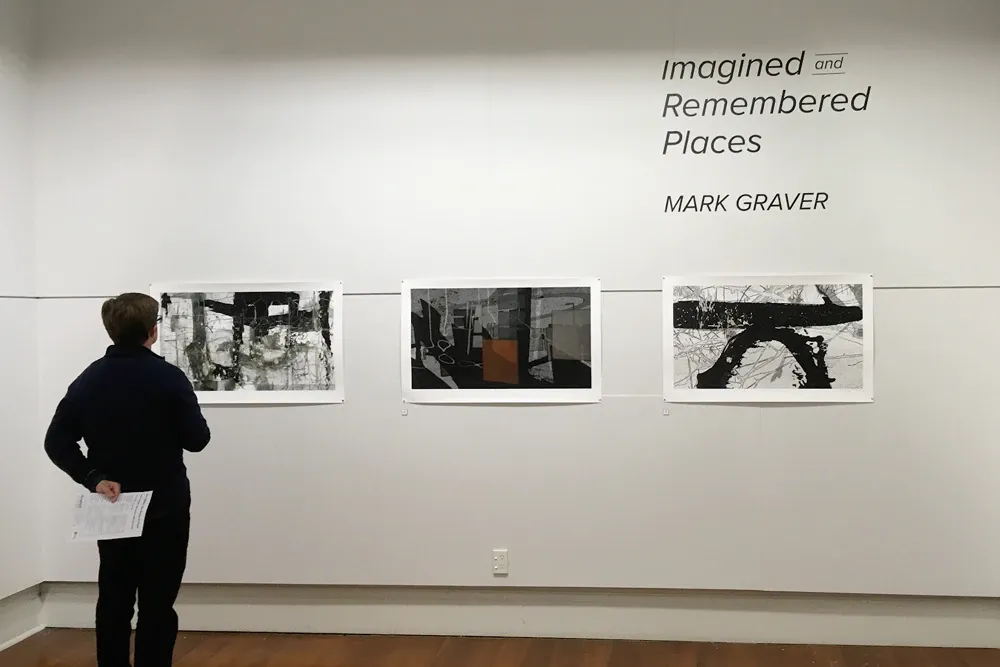
Imagined and Remembered Places - Hamilton. Photo supplied.
The Royal Society of Painter-Printmakers (RE)
The RE, based at the Bankside Gallery in London, began in 1800 and received its Royal Charter in 1888, evolving into one of the world's premier printmaking organisations. All of the Society's members are practicing professional printmakers and are elected after a rigorous selection by a panel of their peers. Once elected, each member has a work chosen for the RE Diploma Collection at the Ashmolean Museum in Oxford.
Mark Graver’s Imagined and Remembered Places is currently open at the Anderson Rhodes Gallery in New Plymouth until July 27th. For more information about the exhibition, click here.
